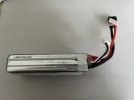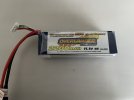JimmyB
Now retired - trains and fishing
When I first started my battery conversions I use Lithium Polymer (LiPo) batteries, these normally come with 2 sets of leads, a positive and negative giving full pack voltage for use with the equipment, and 3/4/5 wire lead depending on if it is 2S/3S/4S for balance charging. These packs do not come with any type of protection, and I am now slowly moving to Lithium Ion (Li-Ion) batteries with Battery Management Systems (BMS) as part of the pack.
My question is, can I add BMS to LiPo batteries by using the charging lead as in input to the BMS, and then utilising the output from the BMS. I hope this is clear, as to what I am asking. TVM
My question is, can I add BMS to LiPo batteries by using the charging lead as in input to the BMS, and then utilising the output from the BMS. I hope this is clear, as to what I am asking. TVM



